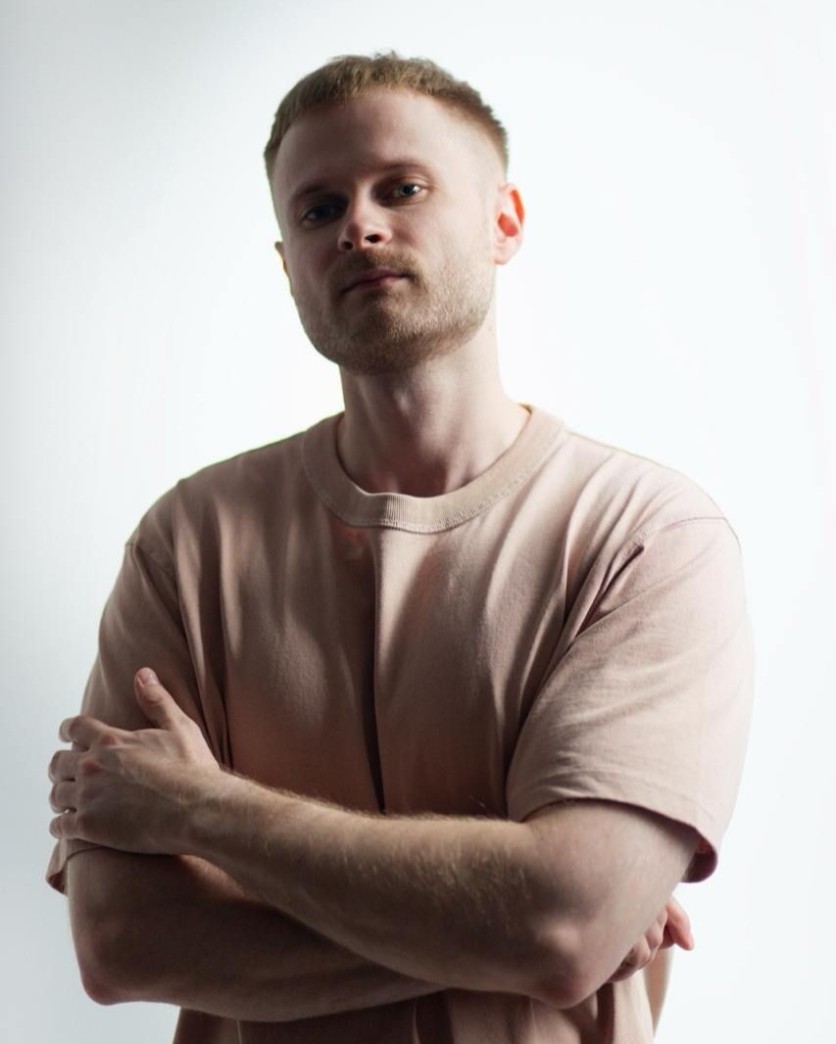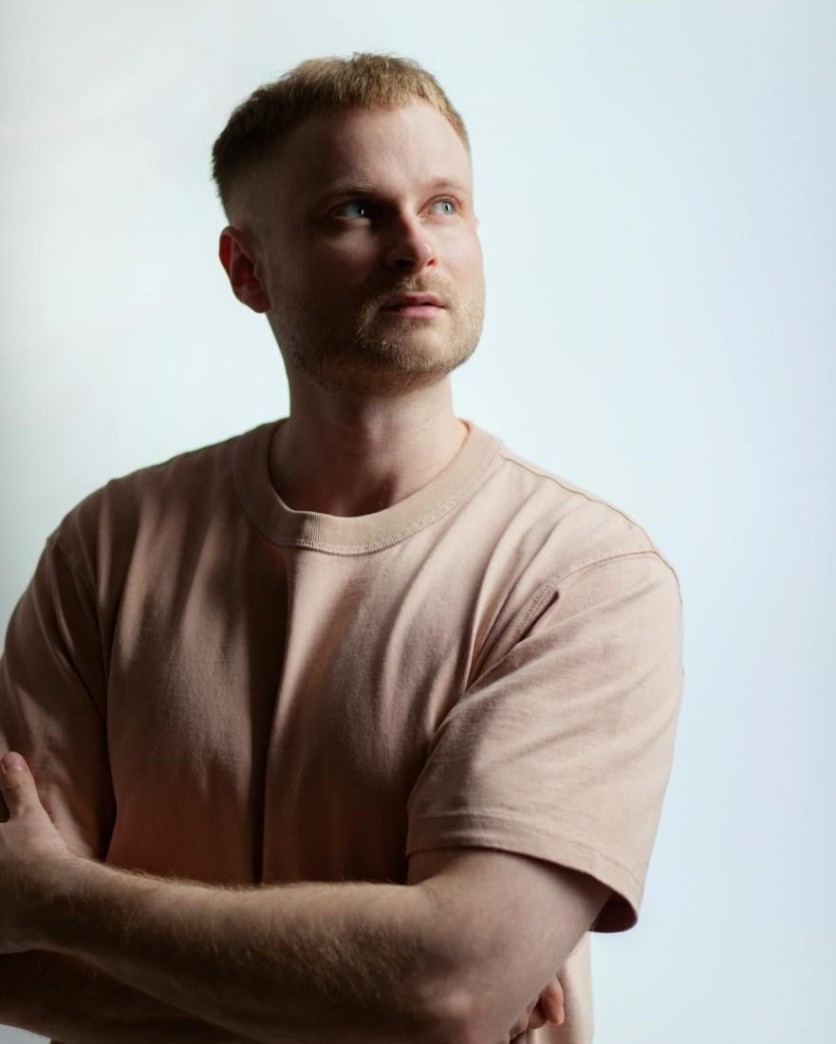
Vitali Grigorjev, a talented product designer and UX expert, has traveled a difficult but very interesting path from an economics student with a passion for creativity to a sought-after specialist working with the world's leading companies. He took part in the development of large-scale projects for Cisco and Mind Ease, as well as being recognized as a mentor for aspiring designers. Vitali is also known as an author of scientific articles in the field of design and a member of the Belarusian Union of Designers.
In our interview, Vitali shared with TechTime the history of his professional development, talked about the most significant projects, and shared his expert opinion on trends in the design sphere.
— Vitali, please tell us about your path in the Product Designer profession. Where did it all begin?
My path in the profession of product designer began rather unexpectedly. As a student of economics, I gradually realized that economics was not exactly what I wanted to devote my life to. I had a certain creative background, as I graduated from art school. And in my free time, I got interested in graphic design, studied Photoshop, and took on small orders, for example, designing posters, booklets, and menus for local organisations. After receiving the first positive feedback from clients and feeling that I liked the design, I decided to develop in this direction more seriously. Gradually, my focus shifted from print to web design, which fascinated me with its wide possibilities. I began my professional journey as a web designer in 2014 when I took a job at the Profitkit agency in St. Petersburg.
— What was your first experience of working in web design? What do you remember about the beginning of your career at Profitkit.ru?
Working at Profitkit agency was truly significant for me, as it was there that I got my first full-fledged experience in web design. I worked under the guidance of an experienced art director, who taught me how to build a proper workflow, interact effectively with developers, and understand the needs of clients. It was a very valuable period of learning and professional growth. I absorbed knowledge, tried to do my best, and improved my skills. After about a year of hard work, I felt that I had already grown out of the position of junior designer and was ready to move to the next level to take on more complex and responsible tasks. The time at Profitkit helped me gain confidence in my abilities and laid a strong foundation for future accomplishments.
— How would you describe your style and approach to web design? What sets your work apart from others?
I would describe my web design style as user-centered, aimed at creating intuitive and user-friendly interfaces. For me, the main priority is the usability of the product and how easy and comfortable it is for users to interact with it and complete their tasks. At the same time, I strive to ensure that the design also meets modern aesthetic trends, looks attractive, and evokes pleasant emotions. I think it is attention to detail deep elaboration of user experience combined with visual aesthetics and system thinking that distinguishes my work. I always try to find an optimal balance between creative ideas and the business goals of the product.
— What about your creative process? How do you generate ideas and bring them to life?
My creative process usually begins with a deep dive into the problem and context of the project. I try to study the target audience in as much detail as possible to understand their needs, pains, and expectations. This helps me to put myself in the shoes of future users of the product to feel their experience.
Then, I generate ideas through brainstorming, sketches, and searching for references. I try to generate as many ideas as possible without limiting the flight of fancy. After that, I move on to selecting the most promising concepts, refining and detailing them, creating interactive prototypes. Then, I test them, collect feedback and improve the solution.
The most important thing in my approach is empathy with users, a desire to deeply understand their experience and create the best solution for them.
— Tell us more about the Digital Twin project for Cisco. What is this product, and for whom is it intended?
Digital Twin is a large-scale and technologically complex project that aims to help large companies monitor the state of their IT infrastructure and prevent network downtime. The product visualizes the topology of the company's network and makes it possible to see potential problem areas, analyze load, and identify anomalies literally in real time. After all, even one hour of network downtime can result in huge losses for a business—sometimes hundreds of thousands of dollars. That's why the ability to proactively identify and fix problems is so important.
For Digital Twin users, it is critical to have a convenient and functional monitoring tool that allows them to keep their finger on the pulse and take the necessary measures in a timely manner. This was the key goal of the project—to provide users with the most efficient and convenient solution that will help minimize risks and optimize the operation of the enterprise network infrastructure.
— What were your responsibilities in the Digital Twin project? What was the most challenging?
I held the position of Senior Product Designer and was responsible for designing the user interface to effectively complete the incoming tasks.
Perhaps the most difficult thing for me in this project was to "translate" all this complex technical functionality, a huge amount of data, and metrics into a truly user-friendly interface that was not overloaded with unnecessary details. It was important to find the balance between informativeness and convenience, to visualize large amounts of data in such a way that they were easy to operate. At the same time, it was important to constantly check design decisions with real users, test and refine the interface. This work required a deep immersion in technical specifics and, at the same time, a great empathy with users. But in the end, we managed to create a product that was highly appreciated by both the client and the end users.
— Vitali, tell us about your work in the British startup Mind Ease. As far as we know, you held the position of Lead Product Designer and redesigned the product. What exactly did you change in the design of the application?
You're right. At Mind Ease, my task was to update the design of the mental health app, making it more competitive but keeping the recognizable style. We did a complete redesign of the visual component, creating a design system based on an "atomic" approach. This allowed for greater consistency in interface elements and made it easier to make changes in the future. Areas of redesign included the popular "Panic Relief" sections with breathing exercises and the media content library, which collects a wealth of digital reading material. I was also heavily involved in the development of the AI chatbot, focusing on UX patterns and working through various interaction scenarios.
— Tell us more about the AI chatbot project. What tasks did you solve, and what results did you achieve?
In another interesting project I had the opportunity to be a part of the Mind Ease startup that was working on an AI chatbot. My task was to improve the design of a chatbot with artificial intelligence elements, which consults users on various issues of psychological well-being, gives recommendations and advice.
The key challenge was to make the user's communication with the chatbot as natural, pleasant, and comfortable as possible. After all, Mind Ease is a service that deals with a very delicate and sensitive area, and it is extremely important to build trusting communication. Together with the project team, we constantly analyzed feedback from users, refined and improved our solution. And the results of this work did not wait long—we managed to achieve an impressive increase in user engagement by 70%, and interest in the chatbot grew by 15%. These figures once again confirm how important the role of quality design is in digital products, especially in such sensitive areas as mental health. I am very proud of our work on this socially important project.
— You have written 5 scientific articles in the field of design. What is their essence, and how do they help other designers?
Yes, indeed, over the past few years, I have written a series of scientific articles devoted to various aspects of product design and UX. In my publications, I strive not only to share my own years of practical experience but also to critically reflect on current trends in our field and analyze best practices and methodologies.
The key idea that runs through all my articles is the desire to give both beginners and more experienced professionals truly working tools and techniques that will help them improve their skills and reach a new professional level. I am convinced that my articles make a certain contribution to the professional development of designers and help to form a more mature, strategic view of our profession. And I am very happy to receive positive feedback from colleagues who have benefited from my materials in their work and career development.
— And how would you characterize the main trends in product design today?
First of all, there is extremely high competition. The market is overheated, and the requirements for designers, even entry-level ones, are sometimes excessive. At the same time, there is a tendency to move from outsourcing and freelancing to hiring product designers in the company's staff. The number of interview stages is also increasing, which, on the one hand, complicates the employment process but, on the other hand, allows for a better selection of candidates. And, of course, the growing influence of AI—not as a substitute for a designer, but as a daily assistant in his work.
— Your membership in the Belarusian Union of Designers speaks about the recognition of your professional activity. Tell us more about it, please.
Joining the Belarusian Union of Designers means a lot to me. It is the oldest organization that unites the country's leading designers from different fields. To become a member of the Union, you have to meet high professional and reputational criteria, which are assessed by experts. Membership has opened up new opportunities for me to develop and share my experience with the best masters of the industry.
— You are a mentor to aspiring designers. What does this role give you, and how do you help young professionals?
Mentoring brings me great pleasure—the opportunity to share my accumulated knowledge and experience and to get a fresh perspective from young colleagues. Among my mentees are students of specialized universities and aspiring designers. I help them develop their professional skills, build their careers, and overcome difficulties in their work. I see my role as guiding them, giving objective expert assessment, and supporting motivation. I am glad that many of the guys I mentor become great specialists and make ambitious projects.

— What are your plans for the future?
My immediate goals include strengthening my analytical competencies in design, learning new approaches to design, and developing soft skills. I also plan to work on current projects, develop my own brand, launch new products, and, of course, continue mentoring.
ⓒ 2025 TECHTIMES.com All rights reserved. Do not reproduce without permission.




